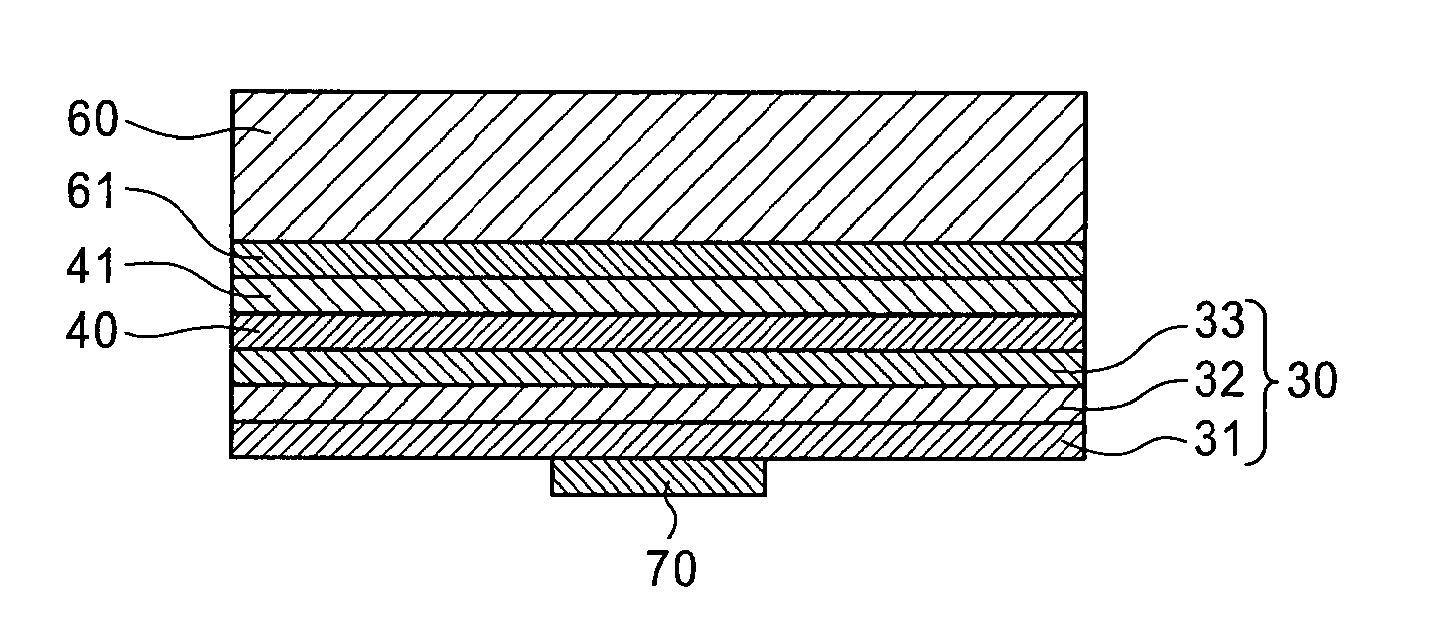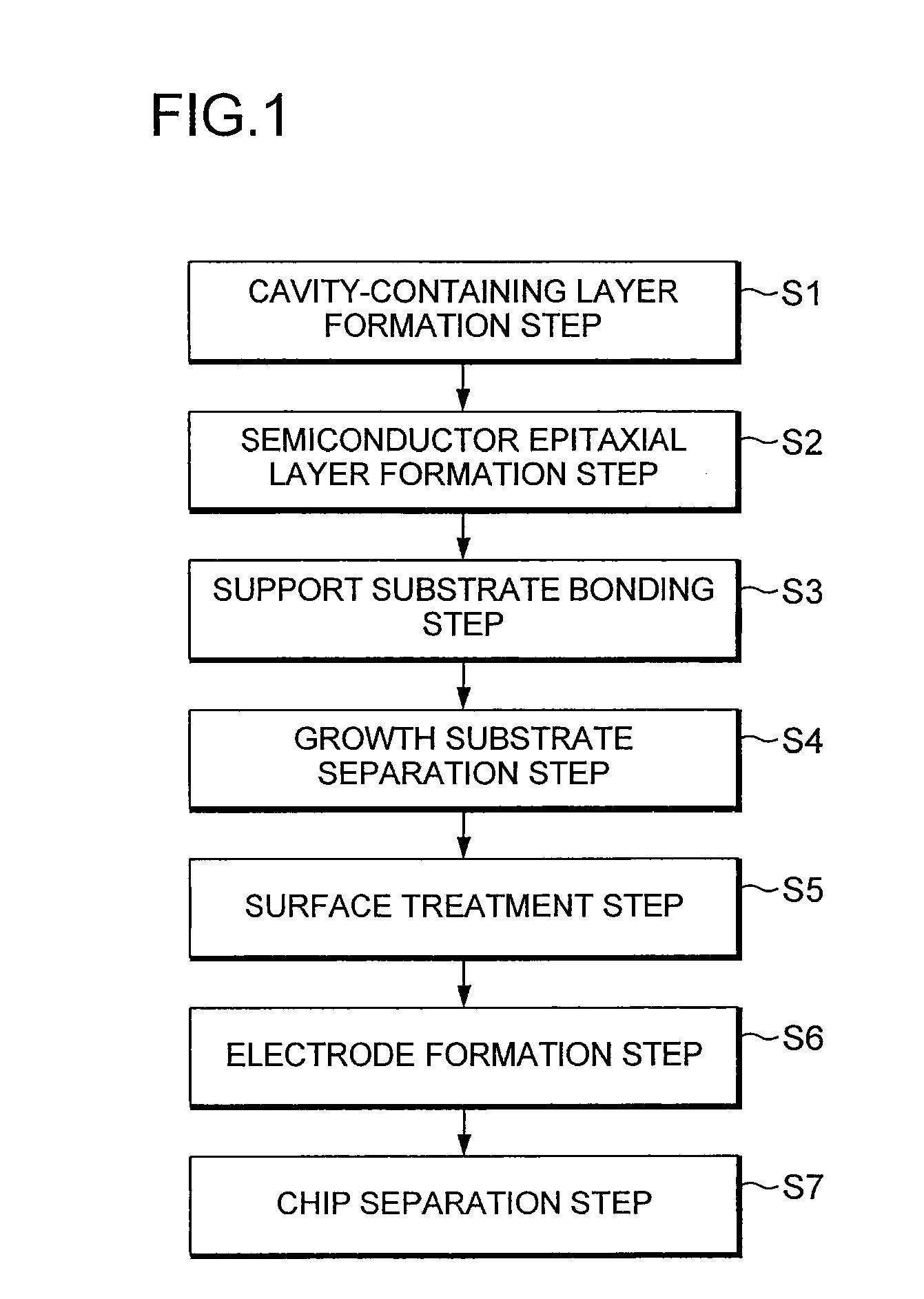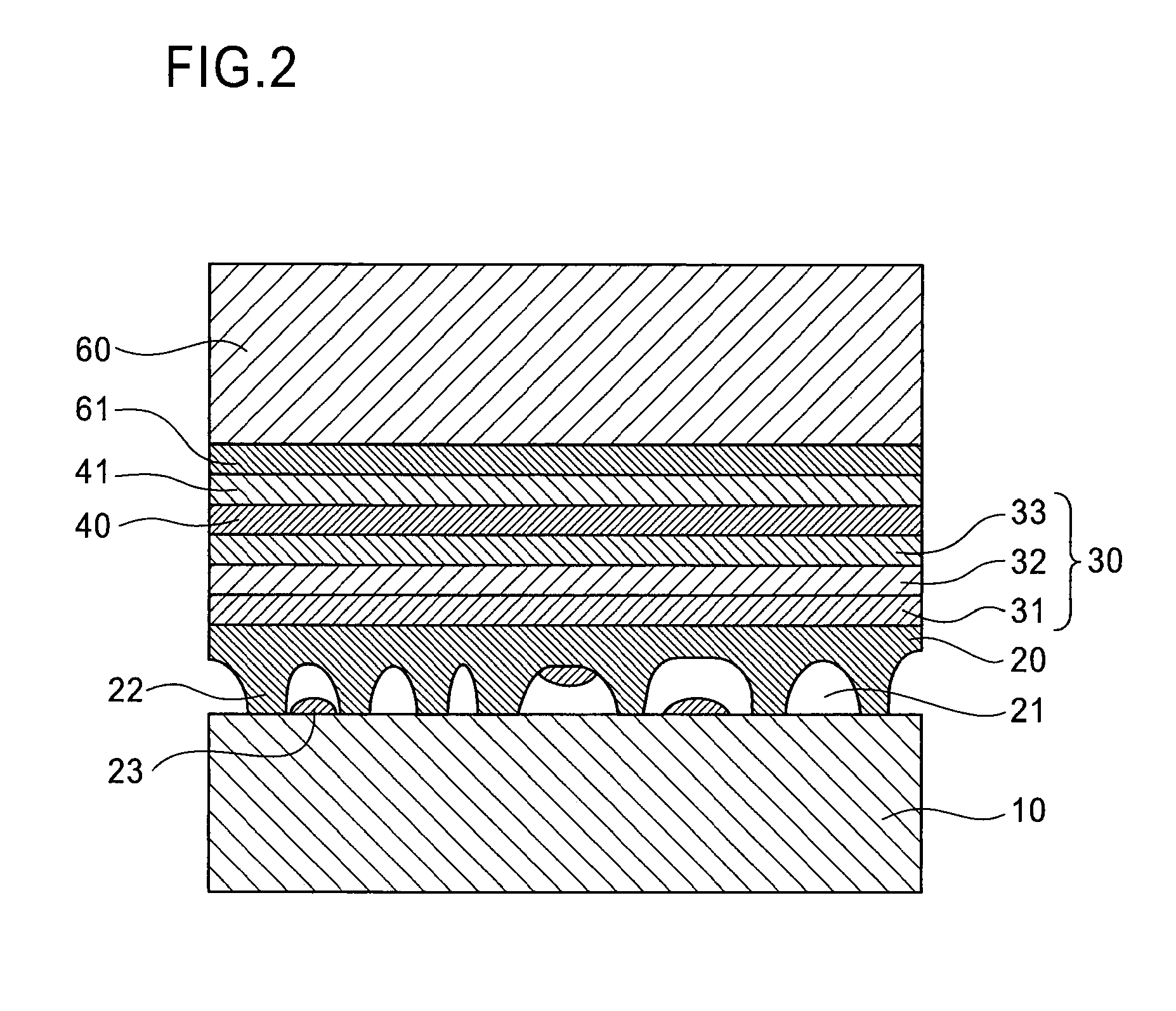Semiconductor device and method for manufacturing semiconductor device
a semiconductor and semiconductor technology, applied in the direction of semiconductor devices, basic electric elements, electrical equipment, etc., can solve the problems of high cost, high cost, and high cost of semiconductor epitaxial layer cracks, and achieve the effect of bonding strength
- Summary
- Abstract
- Description
- Claims
- Application Information
AI Technical Summary
Benefits of technology
Problems solved by technology
Method used
Image
Examples
Embodiment Construction
[0030]Embodiments of the present invention are described below with reference to the drawings. In the drawings shown below, the same reference numerals are used for the essentially the same or equivalent constituent elements and portions. The present invention relates to a semiconductor device, and a semiconductor light-emitting device is described as an example below. FIG. 1 is a flowchart of the steps of manufacturing a semiconductor light-emitting device according to an embodiment of the present invention. FIG. 2 is a cross-sectional view showing the structure of the semiconductor light-emitting diode in the step prior to removal of the growth substrate.
[0031]The method for manufacturing a semiconductor light-emitting device of the present embodiment includes a cavity-containing layer formation step (step S1) of forming a cavity-containing layer 20 composed of a group III nitride having numerous internal cavities on the growth substrate 10; a semiconductor epitaxial layer formati...
PUM
 Login to View More
Login to View More Abstract
Description
Claims
Application Information
 Login to View More
Login to View More - R&D
- Intellectual Property
- Life Sciences
- Materials
- Tech Scout
- Unparalleled Data Quality
- Higher Quality Content
- 60% Fewer Hallucinations
Browse by: Latest US Patents, China's latest patents, Technical Efficacy Thesaurus, Application Domain, Technology Topic, Popular Technical Reports.
© 2025 PatSnap. All rights reserved.Legal|Privacy policy|Modern Slavery Act Transparency Statement|Sitemap|About US| Contact US: help@patsnap.com



